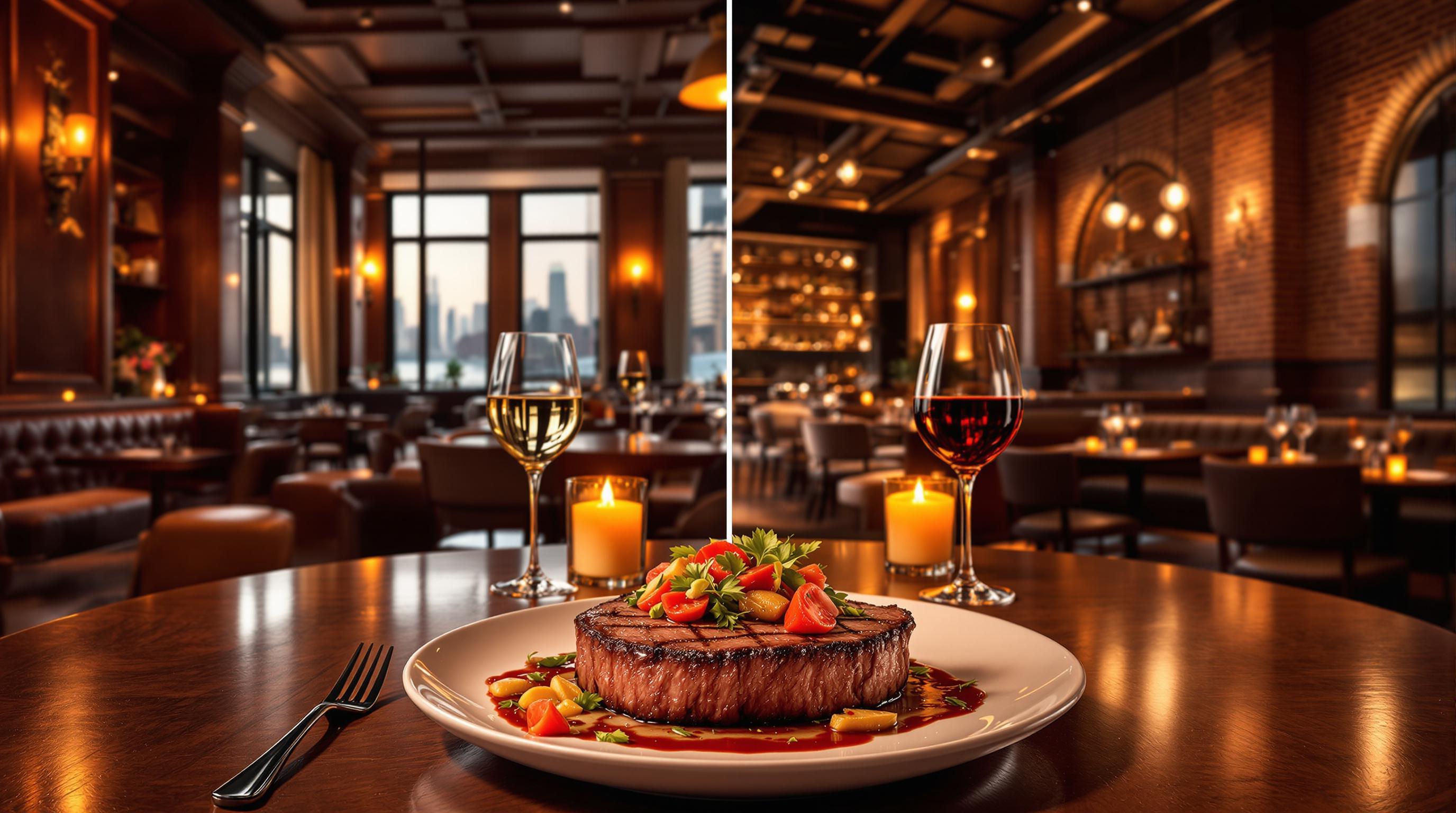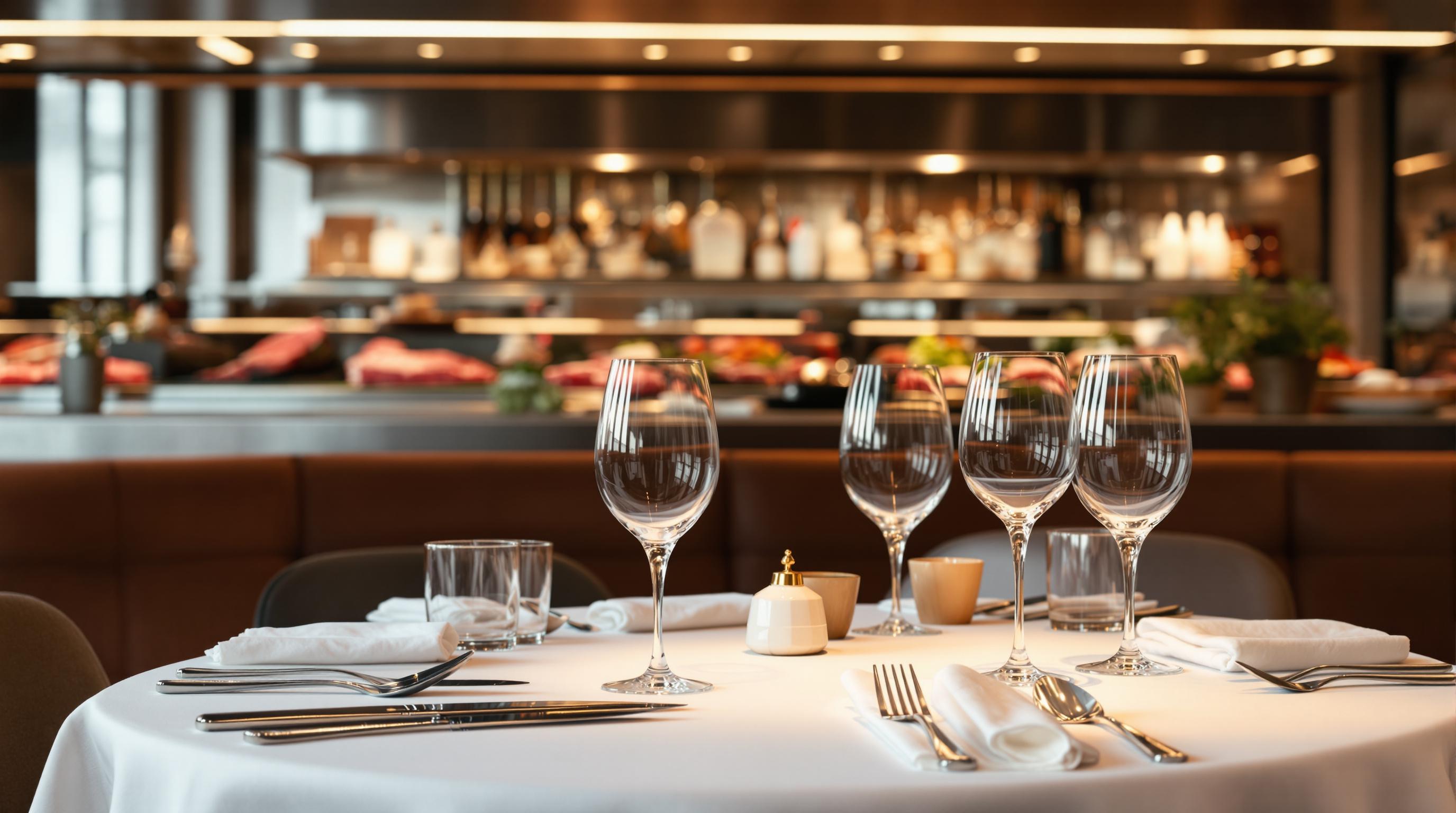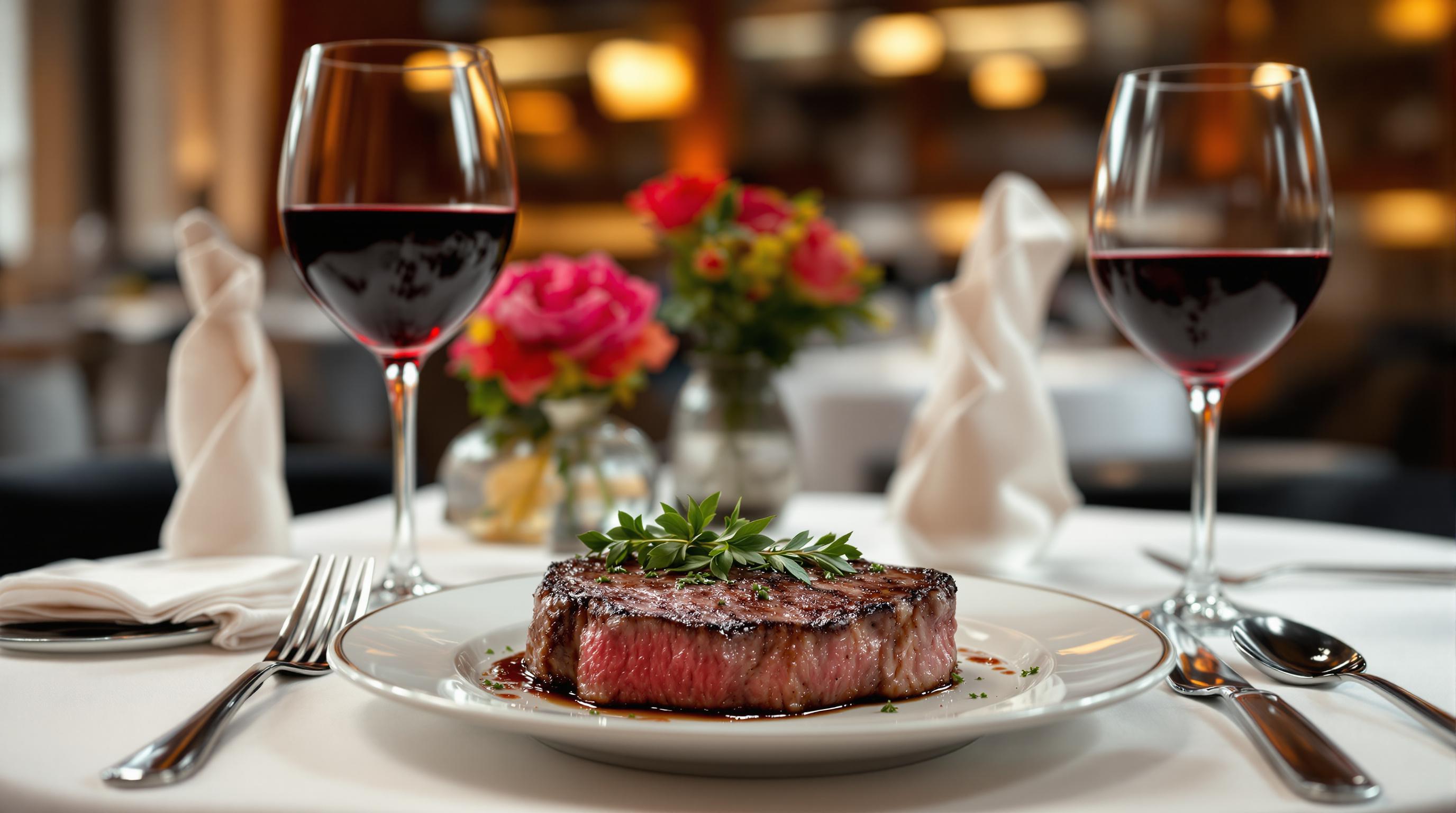Mentorship is the backbone of NYC steakhouse chef training. It ensures chefs master essential skills, maintain high standards, and innovate within tradition. Here's how mentorship shapes their journey:
- Hands-On Training: Aspiring chefs learn practical techniques like steak preparation, side dishes, and sauces under expert guidance.
- Apprenticeships: Chefs start with structured programs focusing on food prep, workflow, and safety.
- Advanced Skills: Training includes perfecting steak cooking temperatures, menu planning, and meat selection.
- Career Growth: Mentors guide chefs through roles like sous chef to executive chef, helping build industry connections and leadership skills.
This process ensures NYC steakhouses maintain their reputation while preparing chefs for long-term success.
Learning the Basics: Apprenticeships and Observation
How Apprenticeships Work
Apprenticeships combine hands-on experience with structured skill-building, laying the groundwork for steakhouse chef training. These programs cover everything from food preparation to maintaining an efficient workflow. Aspiring chefs take on increasing responsibilities, gaining expertise in prep work, kitchen operations, and safety protocols.
Learning from Expert Chefs
Observation plays a key role in sharpening a chef's abilities. By shadowing experienced chefs during service, apprentices learn how to handle the fast-paced environment of a busy kitchen. They pick up essential skills like maintaining quality, managing communication, and ensuring smooth operations. This direct learning process helps preserve the high standards of NYC steakhouses.
Together, these approaches help chefs develop the skills and judgment needed to excel in the demanding world of NYC steakhouses.
Mentorship in Hospitality: Chef Andre Natera's Journey
Kitchen Skills Training
Advanced kitchen training builds on hands-on apprenticeships, honing the specialized techniques required for NYC steakhouses.
Steak Preparation Methods
NYC steakhouse mentors focus on teaching chefs the exact methods needed to prepare steaks perfectly. This includes hitting the desired internal temperatures while creating a flavorful crust. Chefs rely on touch, visual cues, and precise timing to determine doneness.
Here are the key temperature guidelines for steaks:
- Rare (125°F): Bright red, cool center
- Medium Rare (135°F): Red, warm center
- Medium (145°F): Pink, hot center
- Medium Well (150°F): Slight pink center
- Well Done (160°F): No pink, hot throughout
Each cut of steak requires specific attention:
- Ribeye: Focus on rendering the fat cap and ensuring even cooking.
- NY Strip: Emphasize achieving a proper sear and crust.
- Filet Mignon: Precision is key to maintaining tenderness.
- Porterhouse: Balance cooking between the strip and tenderloin sections.
In addition to steak preparation, chefs also learn to master the sides and sauces that complete a steakhouse meal.
Side Dish and Sauce Training
Chefs are trained to prepare classic steakhouse sides like creamed spinach, roasted mushrooms, and a variety of potato dishes. They also refine their skills in making traditional sauces that elevate the dining experience.
Key sauces include:
- Classic Béarnaise: Focus on achieving a smooth emulsion and maintaining temperature control.
- Au Poivre: Perfect the green peppercorn reduction.
- Red Wine Reduction: Learn the correct reduction ratios for depth of flavor.
- Compound Butters: Create balanced flavors with a smooth, consistent texture.
This training ensures chefs can deliver the full steakhouse experience, from expertly cooked steaks to perfectly paired accompaniments.
sbb-itb-e6be165
Advanced Kitchen Knowledge
Once chefs master the basics, they move on to refining their expertise and tackling more complex culinary challenges.
Flavor and Menu Planning
Chefs work closely with mentors to craft menus that balance traditional steakhouse favorites with fresh, inventive takes. They focus on blending flavors and pairing ingredients to create a harmonious dining experience.
Meat Selection and Quality
Selecting the right meat is a key focus. Chefs learn to evaluate marbling, color, texture, and grade, distinguishing between options like USDA Prime and Choice. They also gain skills in proper storage and rotation to maintain quality.
New Recipe Development
Mentors encourage chefs to experiment and create within the steakhouse tradition. By studying classic dishes and applying modern techniques, chefs develop recipes that complement the menu while staying true to the restaurant's character.
Professional Network Development
In addition to honing their cooking skills, chefs in NYC need to build strong connections to succeed in the city's competitive culinary world.
While culinary expertise is essential, thriving in NYC steakhouses also requires solid industry relationships. Mentors play a key role by helping chefs establish these connections.
Building Industry Contacts
Mentors introduce aspiring chefs to important players in the industry, including suppliers, restaurant owners, and other chefs. These connections open doors to top-quality ingredients, job leads, and updates on the latest industry trends. Mentors might also arrange visits to suppliers, giving chefs a chance to understand the supply chain up close.
Professional groups like the American Culinary Federation (ACF) and the Restaurant Association of New York offer resources such as certification programs, continuing education, and networking events to help chefs expand their reach.
Industry Events and Competitions
NYC's dynamic culinary scene is packed with events and competitions. With a mentor’s guidance, chefs can choose the right opportunities to showcase their skills and prepare effectively.
Career Advancement Steps
These experiences naturally guide chefs along clear career paths. Mentorship programs often outline key steps for professional growth:
- Station Chef: Perfecting skills at specific kitchen stations.
- Sous Chef: Gaining experience in management and kitchen coordination.
- Executive Chef: Learning leadership and business management.
- Restaurant Partner/Owner: Understanding operations and financial management.
Mentors often share their own career paths, helping chefs understand leadership roles and the steps needed to reach them. Over time, these mentorships often grow into lasting professional partnerships. Many mentors become trusted references or even future business collaborators, offering long-term support that fuels career growth.
Conclusion: The Future of NYC Steakhouse Training
Mentorship continues to play a key role in NYC steakhouses, even as culinary trends shift. Training programs now combine time-tested techniques with newer methods, while additional tools and resources enhance the guidance provided by mentors. This mix helps maintain the high standards and long-standing traditions that define steakhouses in the city.
As training evolves, the progression from hands-on apprenticeships to advanced culinary skills will remain a focus. At the heart of this system is the strong mentor-apprentice relationship, which ensures chefs are well-prepared to uphold the reputation and quality expected from NYC steakhouses.


